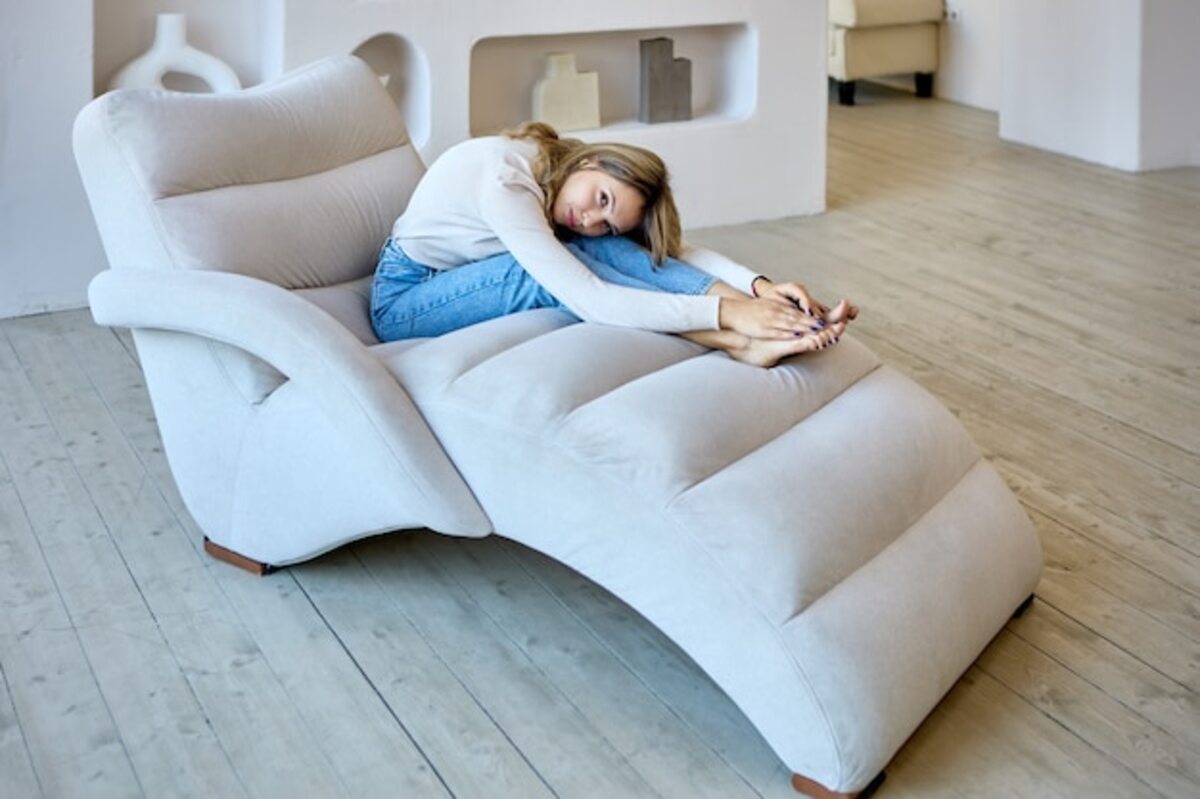Furniture that promotes the art of rest and disconnection

The furniture we choose for our home can radically transform our experience of rest and disconnection. In a world full of distractions, it is essential to create spaces that invite us to relax and recharge. In this article, we will explore how the right furniture not only beautifies our environments but also fosters a healthier and more balanced lifestyle. Discover key pieces that will help you create your personal sanctuary and enjoy the art of rest.
The importance of ergonomic design in rest furniture
Ergonomic design in rest furniture is essential to ensure that our spaces are not only aesthetically pleasing but also functional and healthy. By opting for furniture that respects the anatomy of the human body, such as chairs and beds with adequate support, a correct posture during rest is promoted. This not only helps prevent physical pain and discomfort but also contributes to more restorative sleep and an overall better quality of life. Thus, by choosing pieces that prioritize ergonomics, the experience of disconnection is transformed into a true refuge for the body and mind.
In addition to improving comfort, ergonomic design can also positively influence our emotional state. A well-designed environment reduces stress and fosters a sense of calm, which is essential for achieving an effective disconnection from the fast pace of daily life. Furniture that invites sitting or lying down properly can become essential allies for enjoying moments of reading, meditation, or simply relaxation. Therefore, investing in ergonomic furniture is not only a practical decision; it is a step towards creating an environment conducive to the art of rest and overall well-being.
2. Natural materials: allies of comfort and disconnection
Natural materials, such as wood, cotton, and linen, are essential for creating a comfortable environment in our homes. The warmth that wood brings is not only felt in its texture but also in its ability to regulate the temperature and humidity of the space. Furniture made from these materials is not only aesthetically pleasing but also contributes to a healthier environment by preventing the accumulation of toxins and promoting better air quality. By surrounding ourselves with natural elements, we foster a deeper connection with our surroundings, inviting us to relax our mind and body.
Additionally, organic fabrics like cotton and linen provide a feeling of freshness and softness that is ideal for spaces dedicated to relaxation. These materials allow for proper breathability and are hypoallergenic, making them perfect options for those seeking a refuge free from irritants. Incorporating furniture upholstered with natural fibers or eco-friendly textiles not only enhances physical comfort but also elevates our sensory experience at home. By choosing pieces made from these materials, we are investing in our emotional and physical health, thus creating a sanctuary where disconnecting from daily stress becomes a pleasurable and revitalizing task.
3. Colors and textures: how they influence our mood
The colors and textures of our surroundings play a crucial role in how we feel in our living spaces. For example, soft tones like blues and greens can evoke a sense of calm and serenity, while more vibrant colors like red or yellow can bring energy and vitality. When choosing furniture, it is essential to consider how these visual elements impact our emotional state. A sofa in a pastel tone can invite relaxation, while a chair with cozy textures can be the perfect refuge to unwind after a long day.
In addition to colors, textures also significantly influence our perception of comfort and well-being. Natural materials like wood, cotton, or wool not only bring warmth to a space but also foster a deeper connection with nature. Incorporating different textures through cushions, blankets, or rugs can create an enveloping space that invites active rest. The key is to balance these elements to build a personal sanctuary where every corner speaks to the art of rest and reminds us of the importance of disconnecting from the outside world.
4. Multifunctional furniture: optimizing spaces for relaxation
Multifunctional furniture is an intelligent solution for those looking to maximize their space without sacrificing comfort and style. In increasingly reduced environments, these pieces become indispensable allies, offering options that allow transforming a workspace into a relaxation corner or a living room into a cozy bedroom. For example, a stylish sofa bed not only provides comfortable seating during the day but also converts into a cozy bed at night, thus facilitating disconnection and rest at any time of the day.
In addition to their practicality, multifunctional furniture is designed with aesthetics and well-being in mind. Shelves that convert into desks or tables that fold to save space can harmoniously integrate with existing decor, creating environments that invite relaxation. By choosing these versatile elements, we not only optimize our homes; we also cultivate an environment conducive to mental and emotional tranquility. These pieces of furniture help us maintain order and organization, which is essential for fostering that serene atmosphere needed to disconnect from the daily hustle and enjoy the art of rest.
5. The magic of recliners and their health benefits
Reclining chairs are one of the most iconic pieces of furniture designed for relaxation, and their magic lies in the perfect combination of comfort and functionality. These chairs not only provide a comfortable place to sit but also allow for the adjustment of body position to release accumulated tension. By reclining, better blood circulation is promoted and pressure on the spine is reduced, which helps alleviate pains and discomfort typically associated with a sedentary lifestyle. Additionally, the simple act of finding the ideal position can transform any moment into a deep relaxation experience.
Beyond their physical benefits, recliners provide an invaluable sense of mental well-being. Creating a cozy corner in the home with this type of furniture invites you to disconnect from daily stress and enjoy moments dedicated to self-care. Whether reading a good book, watching a movie, or simply watching the day go by, these chairs become perfect allies in promoting healthy practices like meditation or mindful resting. Ultimately, incorporating a recliner into your home is a step toward creating spaces that truly foster the art of rest and revitalizing disconnection.
6. Outdoor spaces: furniture that invites meditation
The outdoors offers a unique space for meditation and introspection, and the right furniture can enhance this experience. Rocking chairs, wooden benches, and ergonomic loungers should not only be comfortable but also designed to harmoniously integrate with the surrounding nature. By choosing furniture that invites sitting and contemplating the environment, we create a conducive atmosphere for disconnecting from the daily hustle and bustle. A cozy nook in the garden or on the balcony provides us with the opportunity to practice mindfulness outdoors, allowing our body and mind to recharge while we enjoy the birds' singing or the gentle whisper of the wind.
It is also essential to consider durable and sustainable materials that not only provide aesthetics but also respect the environment. Natural rattan furniture or recycled wood can offer a deeper connection with our surroundings, creating a sense of peace and harmony. Complementing these spaces with soft cushions and lightweight blankets can make our moments of meditation even more enjoyable. Thus, by incorporating furniture specifically designed to enjoy the outdoors, we transform our outdoor spaces into true refuges where we can disconnect from daily stress and connect with ourselves.
7. Creating cozy corners with strategic furniture
Creating cozy corners in our home, the furniture we choose plays a fundamental role. The strategic arrangement of sofas, chairs, and tables can transform an empty space into a personal retreat intended for rest and relaxation. For example, placing a comfortable armchair near a window allows one to enjoy natural light while reading or meditating. Additionally, adding a side table to support a cup of tea or a book can make this corner even more functional and appealing. The key is to select furniture that is not only aesthetically pleasing but also ergonomic and comfortable.
Additionally, the choice of materials and textures is essential to foster that cozy environment. Opting for soft fabrics like velvet or wool for cushions and blankets can invite more time spent in those relaxation spaces. It is also important to consider the use of warm and neutral colors that promote tranquility; shades like beige, soft gray, or terracotta can be ideal for achieving this atmosphere. Incorporating decorative elements like plants or candles will also help bring life to these corners, making each time we enter them evoke a profound sense of peace and well-being. At the end of the day, these small details add up to create spaces where we can truly disconnect from the outside world and connect with ourselves.
8. The influence of furniture on sleep quality: ideal beds
The quality of sleep is a fundamental pillar for our physical and mental well-being, and the furniture we choose, especially beds, plays a crucial role in this aspect. A suitable bed should not only be aesthetically pleasing but also provide the necessary support for our spine and promote a healthy posture during the night. Factors such as the type of mattress, firmness, and the materials used in its manufacture are decisive in ensuring restorative rest. Opting for a sleep system that adapts to our personal needs can make the difference between a night of insomnia and deep, restorative sleep. In addition to the bed itself, other elements such as pillows and sheets significantly contribute to sleep quality. Choosing pillows that maintain the correct alignment of the neck and soft-to-the-touch sheets can transform your nighttime experience. The incorporation of auxiliary furniture, such as functional nightstands or benches at the foot of the bed, also helps create an environment conducive to rest. Together, these elements can transform our bedroom into a relaxing sanctuary where every detail is designed to foster the art of rest and facilitate an effective disconnection from daily stress.
Therefore, when considering how furniture influences our sleep quality, it is vital to prioritize pieces that are not only comfortable but also promote a calm and harmonious atmosphere. By investing time and resources in carefully selecting these key pieces, we are taking important steps towards a more balanced and rejuvenating life.
9. Current trends in furniture that promote emotional well-being
In the search for a home that promotes emotional well-being, current furniture trends focus on creating cozy and harmonious spaces. Elements such as modular seating, which allow for greater flexibility in space distribution, invite togetherness and relaxation. Furniture with organic and soft shapes, made from natural materials like wood and linen, not only provide aesthetics but also generate a sense of calm and connection to nature. Additionally, neutral and earthy colors dominate this trend, as they are designed to evoke tranquility and serenity in every corner of the home.
Multifunctional pieces are another key trend that fosters emotional well-being by optimizing space and reducing visual clutter. Furniture that combines smart storage with functionality allows for a clean and organized environment, which is essential for promoting mental peace. Additionally, the inclusion of areas specifically designed for practicing mindfulness or meditation within the home is on the rise; for example, comfortable armchairs located by windows or quiet corners where one can disconnect from the outside world. Thus, by choosing furniture that prioritizes both aesthetics and emotional functionality, we create a personal refuge that encourages the art of rest and nurtures our internal balance.



